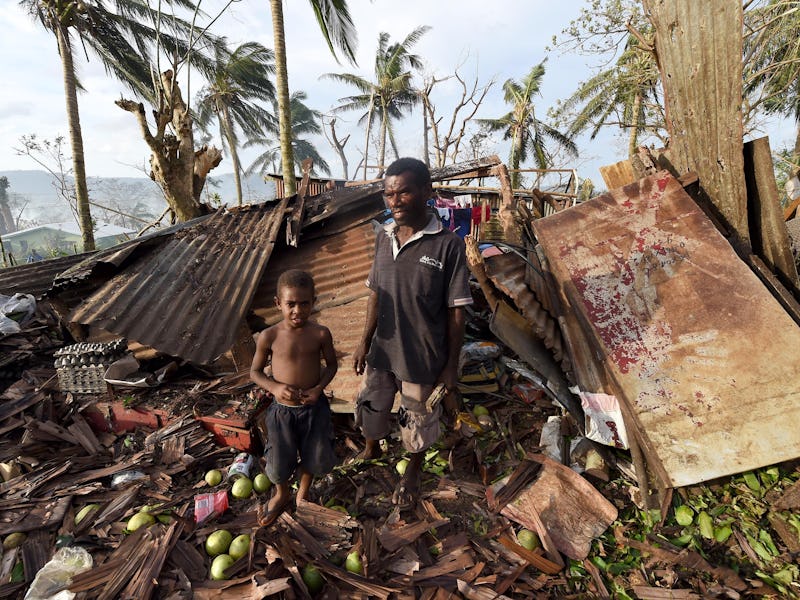'Climate Change Refugee' Visas Could Soon Become a Reality
Thousands are displaced by natural disasters every year.

New Zealand is poised to lead the way in how world governments aide people seeking asylum because of climate change. On Tuesday the nation’s Green party leader James Shaw said in a radio interview that New Zealand’s government is currently considering a program that would allow up to 100 individuals a year into the country through a new visa category specifically for people displaced by climate change.
This “experimental humanitarian visa category” is designed to specifically aide people from Pacific nations like Kiribati and Tuvalu who are especially vulnerable to climate change and already experiencing displacement because of rising sea levels.
It’s a unique and needed proposal: Experts estimate that one person every second is displaced by a climate or weather-related disaster, and the situation is only expected to become more pressing.
“Governments are wise to take a hard look at their immigration and labor mobility laws in light of the diverse challenges posed by climate change,” Geoff Dabelko, associate dean of Ohio University’s Environmental Studies Program and a senior advisor to the Environmental Change and Security Program at the Woodrow Wilson Center told Inverse.
“New Zealand appears to be moving in this direction. The challenge will be devising an approach that fundamentally recognizes that people nearly always move for a combination of reasons, pushes, and pulls.”
Satellite of Kiribati. The Pacific island republic is threatened by rising sea levels.
Displacing 200 million people in the next 30 years
A visa program to help people displaced by weather and climate is a step towards empowering rather than penalizing citizens of small island states as they adapt to a warmer world, Dabelko says. The International Displacement Monitoring Center states that 25.4 million people have been displaced by natural disasters every year since 2006. It’s anticipated that by 2050, approximately 200 million people will have been displaced by environmental changes.
Despite this looming threat, implementations to help the situation are lacking. While climate change refugee is the name more popularly used in the media, it’s misleading. People forced to leave their homes because of droughts, floods, and storms are, as of now, not legally refugees. According to the 1951 UN Refugee Convention, a refugee is a legal term for people persecuted for “race, religion, nationality; membership of a particular social group or political opinion.” There’s no legal system as of now that recognizes environment as persecution.
People displaced by storms in Rhakhine State, Myanmar in 2012.
An absence of precedence
International agencies, like the UN Refugee Agency and the International Organization for Migration, have pressed for the need to protect environmental migrants, but the challenge in determining that environmental changes alone instigated migration has hindered international agreements that can actually provide protection for people.
York University researchers noted in a 2016 brief on refugee environmental displacement that “states are reluctant to assume new obligations for protection, especially in the absence of any specific precedence of states recognizing forced environmental migration as a basis of a humanitarian crisis needing prompt attention.”
“A single adjective to describe why a person moves is rarely accurate,” says Dabelko. “A single new category for a climate migrant opens an important discussion but clearly defining of who qualifies and who does not will be far more complex than the simple category suggests.”
If New Zealand’s government does implement this visa program, it will be a step that experts say can prevent further disaster down the line. In 2016 the World Bank published a report saying that a structured migration program now would help prevent the situation from spiraling into an even larger disaster when people are eventually forced to migrate.
“The worsening impacts of climate change have provided a new moral imperative for providing open access,” reads the report. It may take more than a moral imperative to sway governments to action.